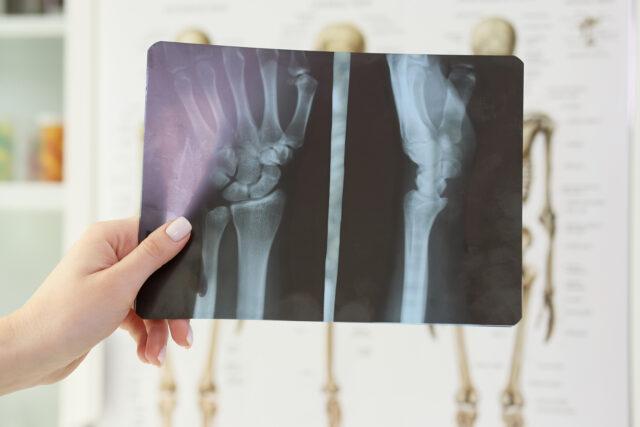 Introduction: In today’s fast-paced world, stress fractures have become increasingly common, affecting athletes, fitness enthusiasts, and even individuals with an active lifestyle. These tiny, hairline fractures in the bones can be painful and debilitating, often requiring substantial recovery time. While conventional treatments like rest, immobilization, and physical therapy play a crucial role in the healing process, incorporating massage therapy into the recovery plan can yield numerous benefits. In this blog post, we will delve into the world of massage therapy and explore how it can aid in the healing of stress fractures, offering much-needed relief and promoting overall well-being.
Introduction: In today’s fast-paced world, stress fractures have become increasingly common, affecting athletes, fitness enthusiasts, and even individuals with an active lifestyle. These tiny, hairline fractures in the bones can be painful and debilitating, often requiring substantial recovery time. While conventional treatments like rest, immobilization, and physical therapy play a crucial role in the healing process, incorporating massage therapy into the recovery plan can yield numerous benefits. In this blog post, we will delve into the world of massage therapy and explore how it can aid in the healing of stress fractures, offering much-needed relief and promoting overall well-being.
Understanding Stress Fractures: Before we dive into the benefits of massage therapy, let’s first gain a better understanding of stress fractures. Stress fractures typically occur due to repetitive strain or overload on a particular bone, leading to microdamage that surpasses the bone’s natural ability to repair itself. Common sites for stress fractures include the shins, feet, and hips. These fractures are often characterized by pain, swelling, tenderness, and sometimes even difficulty in bearing weight.
The Role of Massage Therapy in Stress Fracture Recovery: Massage therapy, when used as a complementary treatment alongside conventional approaches, can provide a range of benefits for individuals recovering from stress fractures. Let’s explore some of these benefits:
- Pain Relief: Massage therapy helps reduce pain associated with stress fractures by stimulating the release of endorphins, the body’s natural painkillers. The gentle manipulation of soft tissues and muscles also promotes relaxation and alleviates muscle tension, providing immediate relief.
- Improved Circulation: Massage techniques, such as effleurage and petrissage, increase blood flow to the affected area, delivering vital nutrients and oxygen to the injured tissues. Improved circulation aids in the removal of waste products and enhances the healing process.
- Reduced Inflammation and Swelling: Massage therapy helps to reduce inflammation by stimulating lymphatic circulation, which assists in the removal of excess fluid and toxins. By decreasing swelling, massage therapy can alleviate pressure on the injured bone, reducing discomfort and promoting faster healing.
- Increased Range of Motion and Flexibility: Immobilization during the healing process can lead to stiffness and reduced range of motion. Massage therapy incorporates stretching and joint mobilization techniques that target surrounding muscles, tendons, and ligaments. These techniques help restore flexibility, enhance joint mobility, and prevent secondary muscle imbalances.
- Stress Reduction: Dealing with a stress fracture can take a toll on an individual’s mental well-being. Massage therapy provides a nurturing and calming environment, promoting relaxation and reducing stress and anxiety levels. This holistic approach addresses both the physical and psychological aspects of recovery, aiding in the overall healing process.
- Accelerated Healing: By improving circulation, reducing inflammation, and promoting relaxation, massage therapy plays a significant role in expediting the healing of stress fractures. It helps optimize the body’s natural healing mechanisms and assists in the remodeling of bone tissues, facilitating a quicker return to normal activities.
- Prevention of Secondary Injuries: After the primary stress fracture has healed, massage therapy can continue to play a vital role in preventing secondary injuries. By addressing muscle imbalances, promoting proper alignment, and maintaining flexibility, massage therapy helps reduce the risk of reinjury and enhances overall musculoskeletal health.
Conclusion: Stress fractures can significantly impact an individual’s quality of life, hindering their ability to engage in physical activities and causing considerable pain and discomfort. Incorporating massage therapy into the recovery plan can provide a multitude of benefits, including pain relief, improved circulation, reduced inflammation, enhanced range of motion, stress reduction, accelerated healing, and prevention of secondary injuries. However, it’s essential to consult with a healthcare professional or licensed massage therapist to ensure that the massage techniques used are appropriate for the specific stage of the injury and the individual’s overall health condition. With its holistic approach, massage therapy can complement conventional treatments and contribute to a speedier and more effective recovery from stress fractures.





